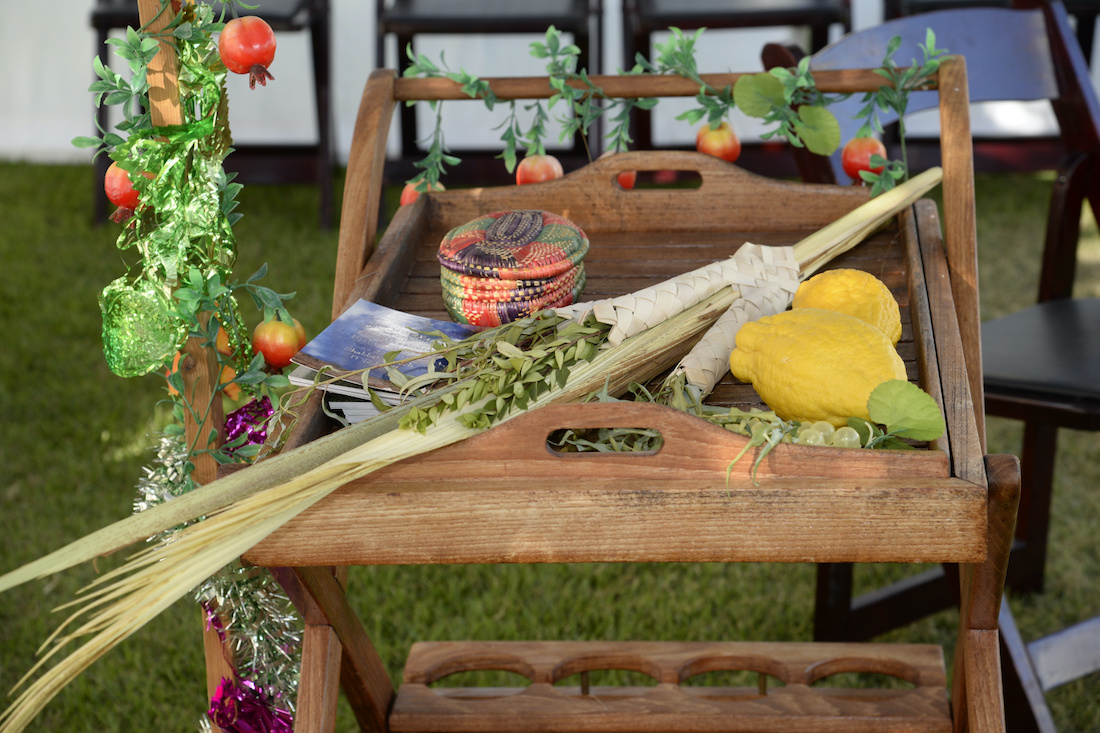The Jewish feast of Sukkot lasts seven (or eight) days – in 2020, from sundown on Friday, October 2, to sundown on Friday, October 9. Here are the facts you need to know.
When is Sukkot?
Sukkot – also known as the Feast of Tabernacles, Feast of Booths, Feast of Ingathering, or simply “The Feast” – always begins on the fifteenth day of the seventh month of the Jewish calendar (Tishrei). Thus, it begins five days after Yom Kippur, the Day of Atonement, and 15 days after Rosh Hashanah, the Jewish New Year. This usually falls in late September or October.
The festival lasts seven days inside the nation of Israel, or eight outside Israel.
What does Sukkot celebrate?
Sukkot celebrates two things. It likely began as a time to give thanks for the fall harvest, and some historical sources believe this aspect grew out of a Canaanite predecessor. However, the feast also commemorates the Israelites’ divine protection as they traveled through the desert on their way to the holy land.
How is Sukkot celebrated today?
Every year, each Jewish family builds a small outdoor building known as a sukkah. The structure must have between two-and-a-half and four walls, and the roof must be made of natural material (s’chach) – often palm, willow, bamboo, or pine branches. The roof has to block most of the sun but also allow rain in. At a minimum, observant Jews will eat their meals in this structure; some even sleep in it overnight.
The first two days and last two days are festival days, outside Israel, when all work would cease. The four days in-between, known as Chol HaMoed, do not rise to the level of festivals: Servile or creative work is barred, but observant Jews may do all they need to do to keep Sukkot. In Israel, businesses often close for the full week.
On each of the days except the Sabbath (Shabbot), Jews bring to synagogue the Four Kinds (arba minim): a citron fruit (an etrog), a palm branch, a myrtle branch, and a willow branch. Sometimes called the lulav, the branches are wrapped together, and the etrog held in the left hand, and they are shaken in all six directions: north, south, east, up, down, and west.
Special prayers are added to the synagogue services, including the recitation of the Hallel Psalms of praise (Psalms 113-118).
On the days of Sukkot, Jews walk around the synagogue, circling the Torah and reciting prayers known as Hoshanot. The seventh day of Sukkot is the Great Salvation (Hoshanah Rabbah). Multiple scrolls of the Torah are taken out of the Ark and held at the bimah by members of the synagogue, as Jews circle seven times and strike the ground with five willow branches.
During the time of Temple Judaism, the priests would make a drink offering of three logs of water gathered from the Pool of Siloam (Sukkah 48a). This Celebration of the Place of Water-Drawing (Simchat Beit Hashoeivah) was accompanied by singing and dancing. Today, the water is no longer offered, but Jews often sing and dance joyously.
These days are followed by one (or two) days of celebration closely associated with Sukkot: Shemini Atzeret and Simchat Torah.
The overall sense makes Sukkot one of the most joyous Jewish festivities, a stark contrast with the solemnity of Yom Kippur.
Is this feast mentioned in the Bible?
The Bible mentions the feast in numerous places, perhaps most clearly in Leviticus: “You shall dwell in booths for seven days. All native Israelites shall dwell in booths, that your generations may know that I made the people of Israel dwell in booths when I brought them out of the land of Egypt: I am the Lord your God” (Leviticus 23:42-43; see also Deuteronomy 16:13-15).
During the time of Temple Judaism, priests would sacrifice 70 bulls (as well as making ram, lamb, grain, and drink offerings – see Numbers 29:12-34). Rabbinical commentary holds that these offerings are made for the 70 nations, so that rain will fall all over the world.
The Prophet Zechariah prophesied that, after a battle of all nations against Jerusalem, all the survivors of all nations will keep the Feast of Tabernacles (Zechariah 14:16-19).
Jesus kept the Feast of Tabernacles, as recorded in the seventh chapter of the Gospel of St. John (vs. 2, 10-14, 37).
What does the sukkah symbolize?
The roof, said Rabbi Eliezer, “evokes the clouds of glory with which God enveloped the Israelites in the desert” as they fled Pharaoh’s Egypt, according to some rabbinical commentaries. (as mentioned in Exodus 13:21-22). But others disputed this. Modern Jews live in sukkot because Jews did so in the desert – or, as “Rabbi Akiva says: They established for themselves actual sukkot” (Sukkah 11b).
Is there an inner meaning for those who celebrate today?
“If I were to summarise the message of Sukkot I’d say it’s a tutorial in how to live with insecurity and still celebrate life,” explained Rabbi Lord Jonathan Sacks, the former Chief Rabbi of the UK and a member of the House of Lords, in 2001. “The meaning of Tabernacles and its message for our time,” he wrote, is that:
Life can be full of risk and yet still be a blessing.
Faith doesn’t mean living with certainty. Faith is the courage to live with uncertainty, knowing that God is with us on that tough but necessary journey to a world that honours life and treasures peace.
The message seems to be: As God watched over us in the past, so He will today.
Why does the feast last an extra day outside Israel?
The extra day came about out of an abundance of caution over the Jewish lunar calendar. In the ancient world, the Sanhedrin would certify the appearance of the new moon and send word to Jews in diaspora. Feasts that began later in the month would then be calculated based on this date. However, diaspora communities began to celebrate an extra day (yom tov sheni shel galuyot) to assure that, in the case of confusion or delay, at least one day of the festivities fell on the appropriate day.
What are Shemini Atzeret and Simchat Torah?
Shemini Atzeret, which literally means “the eighth day assembly,” falls on the 22nd day of Tishrei. The Bible calls it a “solemn rest” (Lev. 23:36-39). Jews often eat in the sukkah, without saying the blessings of Sukkot, but the holiday is technically a separate holiday. The eleventh-century rabbinical commentator Rashi explained the day by saying, “This is analogous to a king who invited his sons to feast with him for a certain number of days, and when the time came for them to leave, he said: ‘My sons! Please, stay with me just one more day, [for] it is difficult for me to part with you!’”
Simchat Torah, which means “Rejoicing in the Torah,” marks the day when Jews read the final portion (parsha) of the Torah, the final verses of Deuteronomy chapter 34. After this reading concludes, they immediately begin reading Genesis 1, showing that the study of the Torah never ends. During the evening and morning services, all members of the synagogue also perform the hakafot, by carrying the scrolls of the Torah in a circle the bimah seven times.
In Israel, these two days are combined into one day.
What is an appropriate greeting for Sukkot?
It is appropriate to wish someone Chag Sameach (“joyous festival”).
Further resources from the Acton Institute on Judaism and economics:
A Jewish perspective on justice, for Rosh Hashanah
FAQ: What is the Jewish holiday of Passover?
Further resources from the Acton Institute on Judaism and economics:
Judaism, Law & the Free Market: An Analysis by Joseph Isaac Lifshitz
Judaism, Markets, and Capitalism: Separating Myth from Reality by Corinne Sauer and Robert M. Sauer
(Photo credit: U.S. Embassy Jerusalem. CC BY 2.0.)

